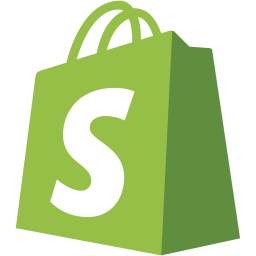
Shopify
Shopify is one of the world’s leading ecommerce platforms, enabling brands to launch and scale online shops with full control over storefront, checkout, and apps. It is used by millions of merchants across categories like fashion, Home & Living, beauty, electronics, and B2B wholesale.
Why sell on
Shopify
Sell on one of the world’s leading ecommerce platforms with automated product listing
About
Shopify
TL;DR
Before diving into the details, here are the key takeaways you should know about the Shopify x shopvibes integration:
- Push & sync automatically: shopvibes is your product data base; Shopify is just another output channel—SKU, variants, images, attributes, metafields all stay in sync via API.
- Massive reach & ecosystem: Shopify processed $292B+ GMV in 2024 and powers 4.8M+ live stores with 14.8k+ apps—a safe bet for D2C growth.
- Transparent costs: No marketplace commissions—expect plan fees + payment processing (+ optional Shopify Markets fees for cross-border).
---
Shopify was founded in 2006 in Ottawa, Canada, originally as a software solution for running an online snowboard shop. Since then, it has grown into the world’s leading commerce platform, powering more than 4.8 million active stores across 175+ countries. In 2024, Shopify merchants processed $292B in GMV, a 24% year-over-year increase, underlining the platform’s global demand and scalability. Its offering spans from small startups on the Basic plan to enterprise retailers on Shopify Plus, with features covering payments, omnichannel POS, B2B, and cross-border selling via Shopify Markets. A unique strength lies in its extensive ecosystem of 14,800+ apps and thousands of agencies and developers, which enable merchants to tailor their stores for almost any vertical—ranging from Home & Living to fashion, electronics, and B2B wholesale. Shopify has positioned itself as the go-to infrastructure for Direct-to-Consumer (D2C) brands and SMEs that want full control over their online store, checkout, and customer experience.
Seller fees
Costs on Shopify differ from typical marketplaces, since there are no sales commissions—just subscriptions, processing, and optional cross-border fees.
1) Subscription (typical 2025 list pricing)
- Basic: ~27€/month
- Grow/“Shopify” plan: ~79-88€/month
- Advanced: ~289€/month
- Plus: from ~2,300€/month (enterprise, billed in USD)
2) Payment processing (Shopify Payments)
- Germany (Basic plan): 2.1% + €0.30 per online transaction
- France (Basic plan): ~1.5% + €0.25 per online transaction
- Higher-tier plans reduce these rates slightly.
- If Shopify Payments is not available, you must use a third-party gateway.
3) Third-party gateways
- Extra platform fee on top of gateway costs:
- Basic: +2.0%
- Shopify: +1.0%
- Advanced: +0.5–0.6%
4) Shopify Markets (cross-border)
- Markets transaction fee: 0.85% (Shopify Payments) / 1.5% (other).
- Duties calculator: currently 0.5% (since Feb 2025).
How to sell on
Shopify
Getting started is straightforward if you follow a structured process.
- Create / prepare your Shopify store – ensure locations, staff accounts, payments.
- Connect Shopify in shopvibes (API) – authenticate with Store URL + admin permissions.
- Map product fields – assign shopvibes attributes to Shopify fields.
- Set collections & tagging rules – structure your catalog for merchandising.
- Configure images & assets – define primary, gallery, alt-text.
- Inventory & locations – match warehouses to Shopify stock locations.
- Run initial sync – QA test batch before full push.
- Enable Shopify Markets – optional for cross-border.
- Go live & monitor – shopvibes keeps everything synced.
How shopvibes can help you
While Shopify is powerful, managing product data directly in it can become messy, especially if you want to easily list on other marketplaces as well. shopvibes solves this by centralizing all product content.
- One source of truth: Enrich and manage attributes once in shopvibes.
- Faster launches: Field mapping templates & Excel ingest speed up onboarding.
- Always current: Every product update flows into Shopify instantly.
shopvibes connects to Shopify via API to create and update products, variants, images, collections, tags and metafields. Your product master data lives in shopvibes; Shopify is treated as a distribution channel. This avoids manual CSV uploads and keeps catalogs consistent across B2C storefronts.
Instead of juggling spreadsheets or manually editing product fields, shopvibes ensures your data is always aligned between systems.
shopvibes sends data changes in near-real-time via API:
- Products & variants: titles, descriptions, options, SKU/GTIN, pricing, barcodes.
- Inventory: per location stock updates.
- Media: primary & gallery images with alt-text.
- SEO fields: titles, meta descriptions, URL handles.
- Metafields: structured attributes (e.g., materials, care, fabric composition).
- Collections & tagging: automated merchandising via tags and rules.
You manage content once in shopvibes; Shopify stays aligned.


